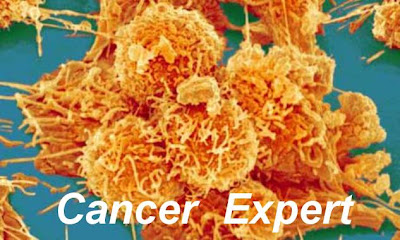What Is Cancer Biography
Source(google.com.pk)
hree quarters of the way through his "biography" of cancer, the New York-based oncologist Siddhartha Mukherjee pauses to set the scene in his laboratory, a beehive of esoteric activity and impenetrable jargon. In lesser hands, such a passage would leave non-specialist readers bewildered and bored. But then he describes himself in the simplest of scientific poses, looking into a microscope. And what he gazes at is one of the more sinister mysteries of human – or anti-human – life. The leukaemia cells he is examining came from a woman who has been dead for 30 years. Unlike their discarded host, these cells are "immortal".
The Emperor of All Maladies
by Siddhartha Mukherjee
In this small but typical moment, Mukherjee manages to convey not only a forensically precise picture of what he sees, but a shiver, too, of what he feels. "The cells look bloated and grotesque, with a dilated nucleus and a thin rim of cytoplasm, the sign of a cell whose very soul has been co-opted to divide and to keep dividing with pathological, monomaniacal purpose."
The yoking of scientific expertise to narrative talent is rare enough, but the literary echoes of The Emperor of All Maladies suggest a desire to go further even than fine, accessible explanation. "Normal cells are identically normal; malignant cells become unhappily malignant in unique ways."
It takes some nerve to echo the first line of Anna Karenina and infer that the story of a disease is capable of bearing a Tolstoyan treatment. But that is, breathtakingly, what Mukherjee pulls off. He calls this great and beautiful book a biography, rather than a history, because he wants his reader to understand his subject not just as a disease, a scientific problem or a social condition, but as a character – an antagonist with a story to tell through its eerie relationships to the wider biological and animal world that is also, inexorably, our story.
Though it has many historical antecedents, the epic medical quest to understand and treat cancer only really took shape as it emerged as a defining disease of modernity. This is the case not just in the metaphorical sense that it speaks potently to our industrialised terrors, but in the direct sense that cancer only became a leading cause of death in the world when we began to live long enough to get it.
People in the past tended to die of other diseases – as they still do in poorer countries today. Cancer now ranks just below heart disease as a cause of death in the US, but in low-income countries with shorter life expectancies, it doesn't even make the top 10. At the beginning of the 20th century, life expectancy at birth in America was 47.3 years. Now, the median age at diagnosis for breast cancer is 61; for prostate cancer, 67. As we extend our lives, Mukherjee writes, "we inevitably unleash malignant growth".
Thus the scene is set for a monumental scientific, political and human struggle. Mukherjee assembles a teeming cast of characters: from ancients such as Atossa, the Persian queen who in 500BC self-prescribed the first recorded mastectomy, to Mukherjee's own patients. There are tales of grizzly surgical techniques and astonishing medical discoveries. But, as with any epic narrative, the central drama marches towards a war.
The full-blown campaign against cancer began with the meeting in the 1940s of an American socialite, Mary Lasker, in search of a great medical cause, and the driven cancer researcher, Sidney Farber, one of the creators of chemotherapy. Mukherjee describes it as the coming together of two travellers, "each carrying one half of a map". The battlefield at the middle of the map was Washington DC and the political alliance that Lasker and Farber eventually formed was with Richard Nixon. The passing in 1971 of the National Cancer Act enshrined the idea of cancer as sovereign among diseases and bequeathed it the language of a world war
What Is Cancer Sign Ribbon cells Horoscope Symbol Tattoos Research Zodiac Sign Ribbon Tattoos
What Is CancerSign Ribbon cells Horoscope Symbol Tattoos Research Zodiac Sign Ribbon Tattoos |

What Is CancerSign Ribbon cells Horoscope Symbol Tattoos Research Zodiac Sign Ribbon Tattoos
What Is CancerSign Ribbon cells Horoscope Symbol Tattoos Research Zodiac Sign Ribbon Tattoos
What Is CancerSign Ribbon cells Horoscope Symbol Tattoos Research Zodiac Sign Ribbon Tattoos |
 |
What Is CancerSign Ribbon cells Horoscope Symbol Tattoos Research Zodiac Sign Ribbon Tattoos |
 |
What Is CancerSign Ribbon cells Horoscope Symbol Tattoos Research Zodiac Sign Ribbon Tattoos |

What Is CancerSign Ribbon cells Horoscope Symbol Tattoos Research Zodiac Sign Ribbon Tattoos

What Is CancerSign Ribbon cells Horoscope Symbol Tattoos Research Zodiac Sign Ribbon Tattoos

What Is CancerSign Ribbon cells Horoscope Symbol Tattoos Research Zodiac Sign Ribbon Tattoos

What Is CancerSign Ribbon cells Horoscope Symbol Tattoos Research Zodiac Sign Ribbon Tattoos
What Is CancerSign Ribbon cells Horoscope Symbol Tattoos Research Zodiac Sign Ribbon Tattoos |
What Is CancerSign Ribbon cells Horoscope Symbol Tattoos Research Zodiac Sign Ribbon Tattoos |
 |
What Is CancerSign Ribbon cells Horoscope Symbol Tattoos Research Zodiac Sign Ribbon Tattoos |